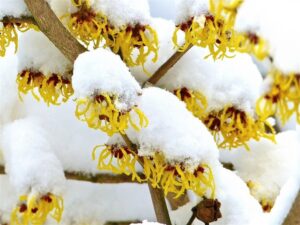January Gardening Tips
go.ncsu.edu/readext?981160
en Español / em Português
El inglés es el idioma de control de esta página. En la medida en que haya algún conflicto entre la traducción al inglés y la traducción, el inglés prevalece.
Al hacer clic en el enlace de traducción se activa un servicio de traducción gratuito para convertir la página al español. Al igual que con cualquier traducción por Internet, la conversión no es sensible al contexto y puede que no traduzca el texto en su significado original. NC State Extension no garantiza la exactitud del texto traducido. Por favor, tenga en cuenta que algunas aplicaciones y/o servicios pueden no funcionar como se espera cuando se traducen.
Português
Inglês é o idioma de controle desta página. Na medida que haja algum conflito entre o texto original em Inglês e a tradução, o Inglês prevalece.
Ao clicar no link de tradução, um serviço gratuito de tradução será ativado para converter a página para o Português. Como em qualquer tradução pela internet, a conversão não é sensivel ao contexto e pode não ocorrer a tradução para o significado orginal. O serviço de Extensão da Carolina do Norte (NC State Extension) não garante a exatidão do texto traduzido. Por favor, observe que algumas funções ou serviços podem não funcionar como esperado após a tradução.
English
English is the controlling language of this page. To the extent there is any conflict between the English text and the translation, English controls.
Clicking on the translation link activates a free translation service to convert the page to Spanish. As with any Internet translation, the conversion is not context-sensitive and may not translate the text to its original meaning. NC State Extension does not guarantee the accuracy of the translated text. Please note that some applications and/or services may not function as expected when translated.
Collapse ▲Plants in Flower
• Witch Hazel,

Winter interest- Witch Hazel
broombesoom
CC BY-NC-ND 2.0
Daphne odora, Hellabores, Hollies, Pyracantha, Washington Hawthorne
Fertilizing
• Use wood ashes on your vegetable garden, bulb beds and non-acid loving plants if the pH of the soil is below 6.0.
Planting
• Plant asparagus crowns this month when soil is dry enough to work.
• Order seeds for early planting.
• make plans for changes or improvements in your garden or lawn.
Pruning
• Prune grape vines.
• Prune dead, broken and undesired limbs on your shade trees and shrubs.
• Do NOT prune Maple, Birch, Elm, Dogwood or other trees that are “bleeders”.
• Remove “weed” or undesirable trees from your landscape.
• Trim Nandinas.
Lawn Care
• Keep tree leaves from collecting on your lawn.
• Slow-release fertilizers may be applied on cool-season lawns.
• Add lime to lawns if soil test recommends amounts based on soil test.
• If applying weed control, read and follow all directions.
Propagation
• Hardwood cuttings of many landscape plants like forsythia (yellow bells), flowering quince, weigela, crape myrtle, juniper, spirea and hydrangea can be taken this month.
Specific Chores
• Try sprouting a sample of leftover seeds. Roll 10 seeds up in a damp paper towel. Keep moist and warm. Check for germination in 7-10 days. If fewer than half sprout, order new seeds.
• Do not forget to care for holiday house plants like poinsettia, amaryllis, Christmas cactus, gloxinia and cyclamen.
• Do not use regular salts to melt ice on walks or drive, these can damage lawn and plantings.
• Order your small fruit plants like strawberry, blueberry and blackberry for a mid-March planting from your local Extension Center.
• Study your home landscape to see what additions or improvements can be made this spring.
• Visit your local Extension Center for landscape and garden information.
• Prepare a spot in the vegetable garden for early spring vegetables like English peas, cabbage, carrots, onions, Irish potatoes, radishes, rutabagas, spinach and turnips.
• Study your seed catalogs and check for the All-American Selections of flowers and vegetables.
• Keep bird feeders stocked and provide water for birds.
• Inspect house plants for insects and diseases.
• Repair and sharpen mower blades and gardening tools.
• Check condition of sprayers and garden hoses.
• Show your houseplants some love this month by taking a damp cloth and gently wipe dust off leaves.
• Collect scion wood for grafting and store in cool, dry place.




